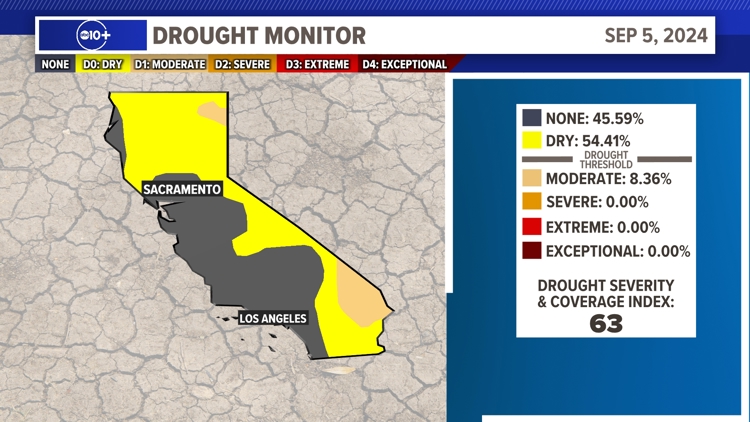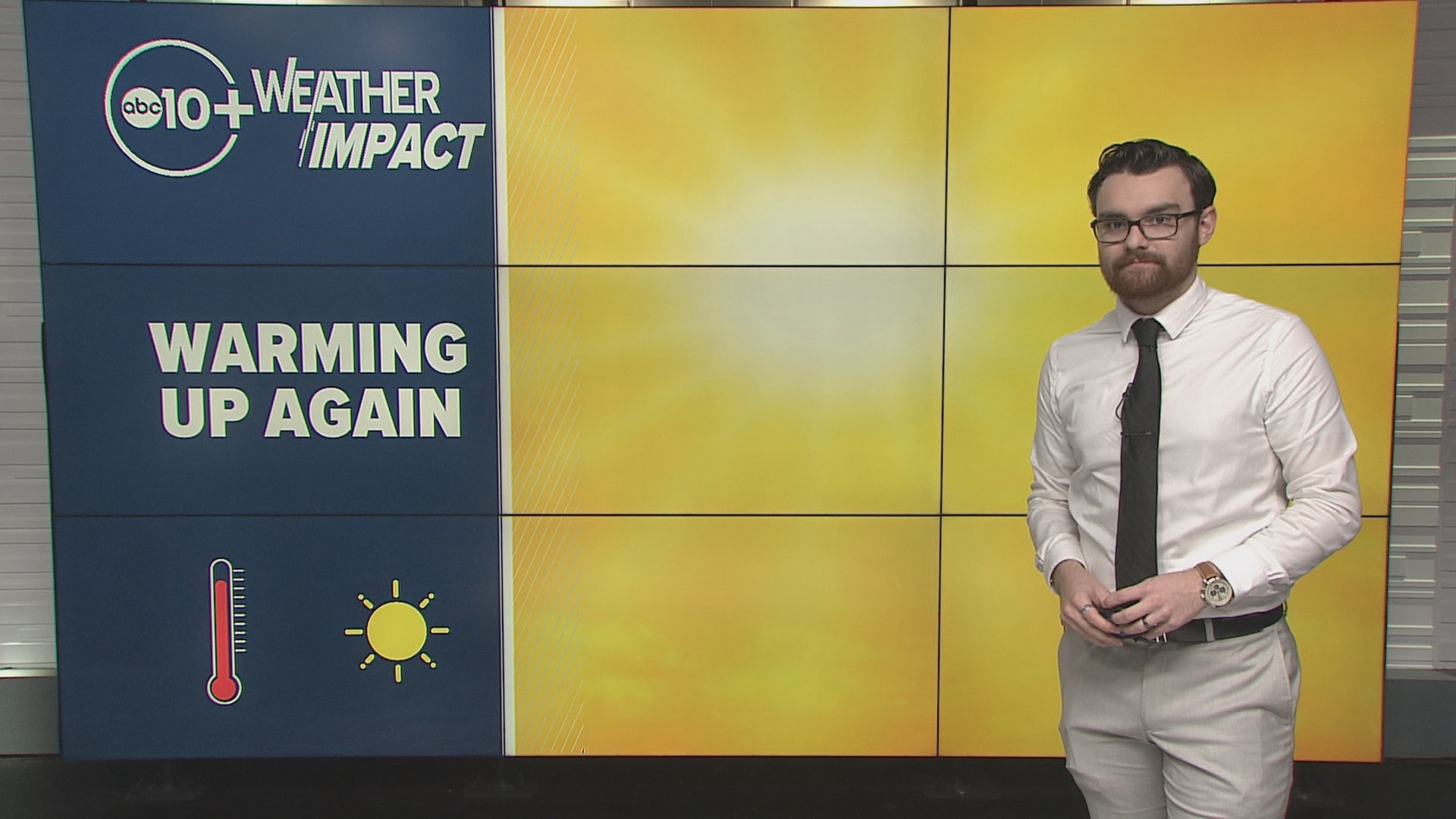SACRAMENTO, Calif. — The new U.S. Drought Monitor shows increasing dryness throughout California as the state nears the end of the driest part of the year.
The state's Moderate Drought category is now at 8.36%, up from 6.91% last week. Severe Drought though was eliminated from the very northern border.


Dan McEvoy, regional climatologist at the Western Regional Climate Center, said several tools are used to determine drought severity. He said California is unique though in that it has a very distinct wet and dry season, so drought map is not necessarily based on recent precipitation.
McEvoy said the state's big picture water supply takes into account streams, reservoirs, snowpack, groundwater and soil moisture. Many of those systems are in much better shape thanks to two years of above to near normal precipitation.
In fact, some of the state's major reservoirs are still above average even at the tail end of the driest time of year.

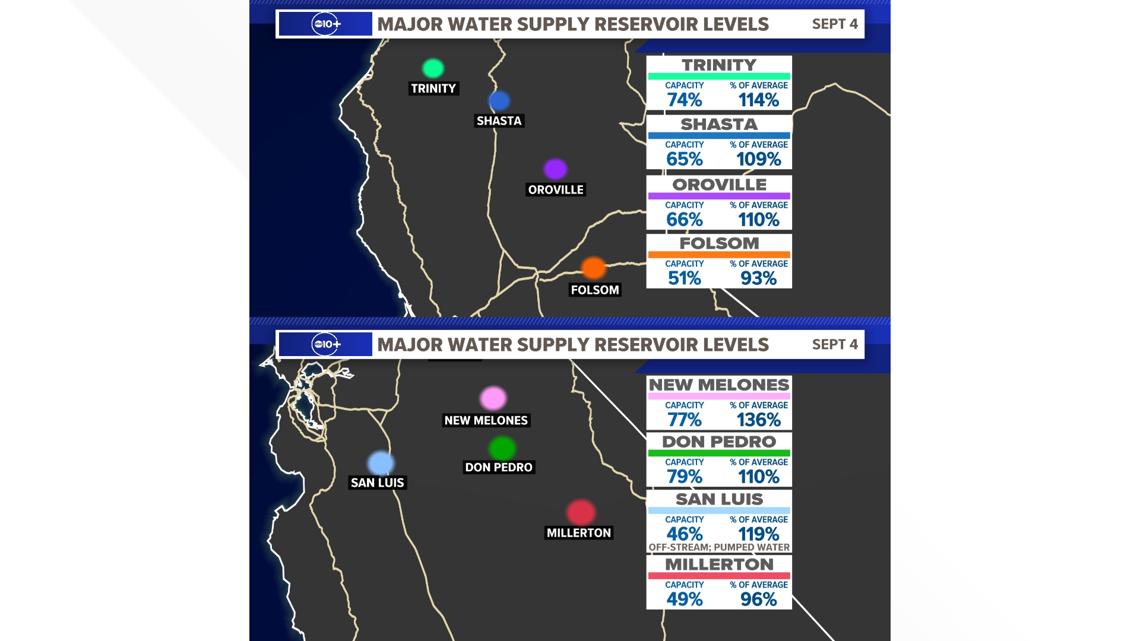
Later in the summer season, McEvoy said heat and evaporation can start to erase those winter rain and snow gains. Record-setting July temperatures are playing a major role increasing the rate of drying. He said this is likely playing a big role in the reason we are seeing expansion of Moderate Drought in California.
The new mapping comes as Governor Gavin Newsom ends the drought state of emergency in 19 counties including: Imperial, Inyo, Los Angeles, Marin, Mendocino, Mono, Monterey, Orange, Riverside, San Bernardino, San Diego, San Francisco, San Luis Obispo, San Mateo, Santa Barbara, Santa Clara, Santa Cruz, Sonoma and Ventura counties. These coastal and desert areas are home to 70% of the state's population.
McEvoy said he doesn't expect much expansion of the drought given that California is a few weeks from the end of the water year, which closes September 30, and the beginning of the fall rain beginning.
California has a marked wet and dry season. The rain and snow that falls in the wet part of the year is captured and stored to feed the state with water during the dry months. Fall rain typically starts in October with 50% of the annual precipitation falling in three months December, January and February. Snowpack is a big player in water storage and delivery accounting for one third of the water supply. Peak snowpack hits in late March then melts through May, filling reservoirs and local waterways.

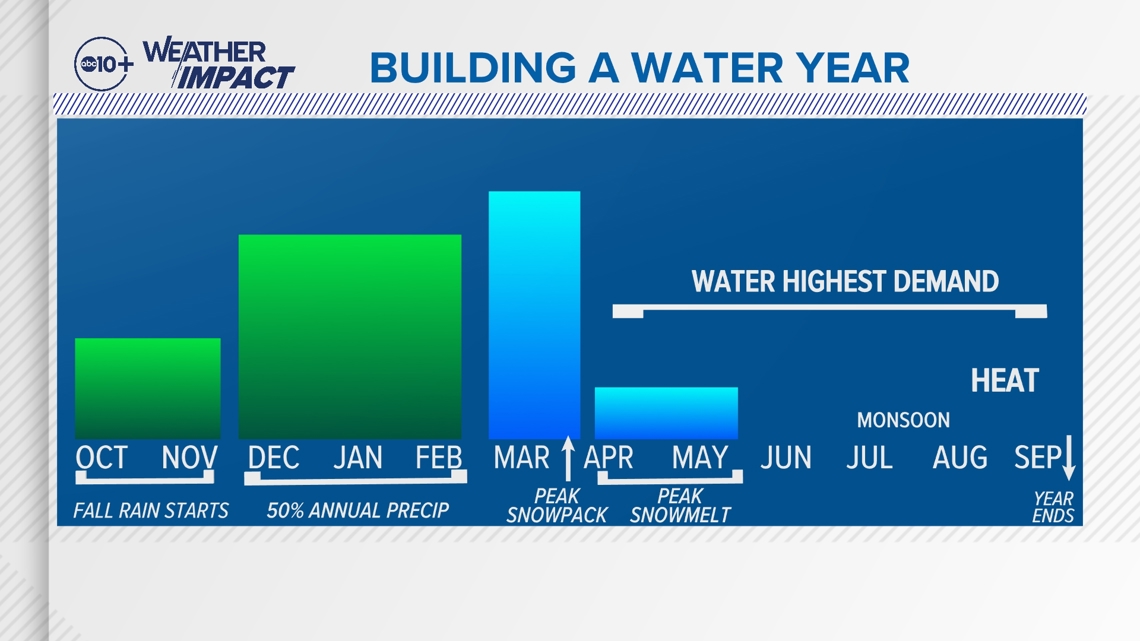
This century, California has rarely seen three years of above average precipitation. McEvoy said he is currently researching whether the state will head into another period where there are three, four or five wet years in a row.
The current forecast for the upcoming winter season is set to enter a La Niña phase in the equatorial Pacific Ocean. This tends to favor a drier than average pattern in Southern California. However, that certainly was not the case in 2022-23 when the Ghost Lake, Tulare Lake, reappeared due to so much rain in the Tulare Basin.
Prior to that record-breaking 2022-23 season, California was digging deep into Extreme and Exceptional Drought. It was at this point Governor Newsom declared the drought emergency on Oct. 19, 2021.

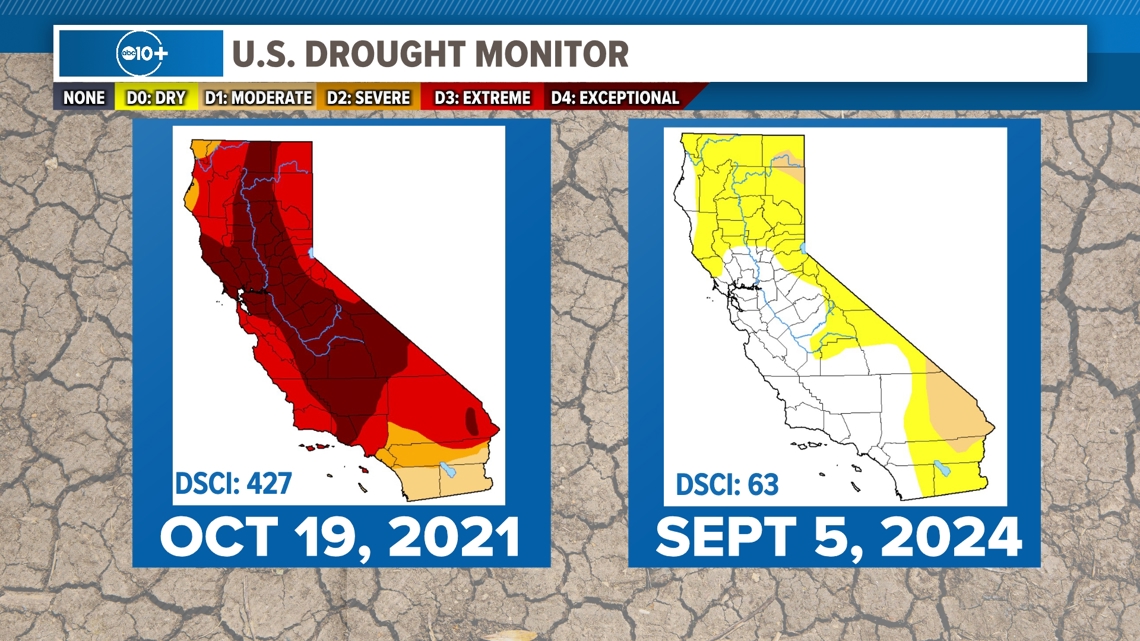
There are still 39 counties that remain under the state of emergency due to depleted groundwater supplies, domestic well failures and harm to native fish persisting in the Sacramento and San Joaquin River basins, the Tulare Lake basin, the Scott, Shasta and Klamath River watersheds and the Clear Lake watershed.
Dr. Josué Medellín-Azuara, University of California Merced Civil and Environmental professor with a specialty in water resources management, said as the state prepares for the new rainy season, we should keep in mind the two major multi-year droughts since 2010 and continue to conserve.
He said even in wet years, warming temperatures due to climate change are playing a major role in our water demands. Crops need more water to compete with evaporation in addition to stressed vegetation and increased fire risks.
Dr. Medellín-Azuara said these climate issues are challenging California to prepare for the potential dry conditions. The state has one of the most highly sophisticated hydro-engineered system. His current research is looking at vulnerable areas to water scarcity and what some cities have done to insulate against dry years. He said much of that has to do with diversifying the water portfolio as to not rely on just one source for water.
More on California's plan to safeguard against water scarcity : California Water Plan, Water Supply Strategy and Water Resilience Portfolio.
WATCH ALSO:

